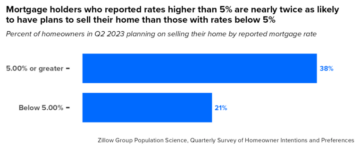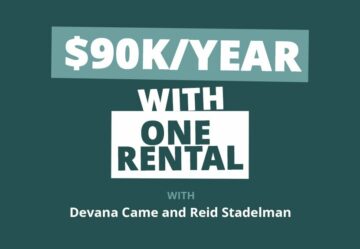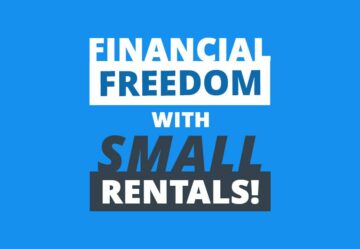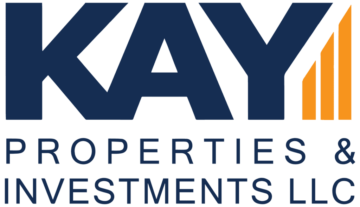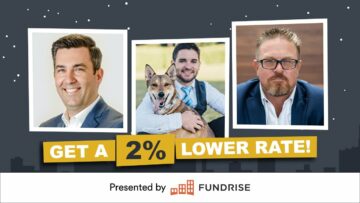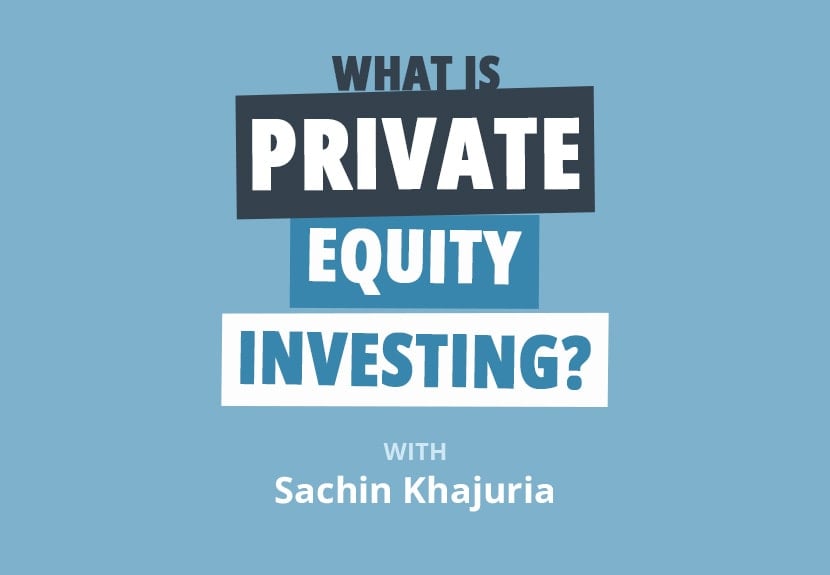
Private equity is a term often left undefined. Ask most people if they’ve heard of private equity, and they’ll say yes. But ask them to explain what it is or how it works, and most Americans will struggle to come up with even a sentence. The industry of private equity investing is shrouded in mystery, but it probably shouldn’t be. If you know what private equity is and how to invest in it, you could take home passive income that beats the stock market and real estate investing with none of the headaches or short-term panic of either.
This simple-to-understand but constantly overcomplicated industry could make you better returns, with far less work, investing in businesses you already know and trust. This is precisely what Sachin Khajuria’s book, Two and Twenty: How the Masters of Private Equity Always Win, is all about. As a former partner at one of the world’s largest alternative asset firms with over two decades of experience, Sachin can explain the ins and outs of private equity better than anyone.
Sachin will demystify the often shadowy world of private equity in this episode. He explains why it’s such a lucrative business and how it’s coming close to matching the same firepower as the public markets many of us invest in. With potential returns far higher than traditional assets, Sachin makes a strong case for why you should be looking into private equity now before the masses find out about it and flood the market.
Click here to listen on Apple Podcasts.
Listen to the Podcast Here
Read the Transcript Here
Mindy:
Welcome to the BiggerPockets Money Podcast where we interview Sachin Khajuria and talk about private equity.
Hello, hello, hello, my name is Mindy Jensen and with me as always is my private equity backed co-host Scott Trench.
Scott:
Thanks, Mindy. Great to be here. And today we’re not bigger pockets, we’re private pockets.
Mindy:
I guess that’s better bigger private.
Scott:
That’s right.
Mindy:
Bigger equity. Should we not even say that?
Scott:
That’s great. Mindy and I are here to make financial independence less scary, just for somebody else, to introduce you to every money story because we truly believe that financial freedom is attainable for everyone, no matter when or where you’re starting.
Mindy:
Whether you want to retire early and travel the world, go on to make big time investments in assets like real estate or start your own business, we’ll help you reach your financial goals and get money out of the way so you can launch yourself toward your dreams.
Scott:
Love it. Well, before we get into it, we’re going to talk about private equity. And I know that private equity has, I’m going to use two words depending on your viewpoint, either a stigma or a mystique attached to it for a lot of folks. We want to demystify it today and make it more accessible. Just to introduce the subject, the essence of it is this, folks are going to raise a pool of capital, let’s call it a billion dollars or three hundreds of millions of dollars. And they’re going to use that capital to invest in businesses. They’re going to buy maybe 10, 15, 20 businesses and their goal is to grow those businesses to cash flow them and then to sell them in order to produce profit and done well over a five to seven year period, they could double a billion dollars or 300 million dollars or hundreds of millions of dollars and make a lot of profit for the people who invested with them and then earn a percentage of that profit.
So they might earn 2 and 20. 2% Of the 1 billion dollars might go to fees that they charge every year to pay their staff to pay their salaries, those types of things. And then again, the 20, the 20% of the profits on the incremental billion that they earn. So it’s a very lucrative way to make money and of a very powerful way to build wealth. It’s also good for the limited partners or the investors who invest in the fund because they have the chance to get better returns than they can get in public markets. Very consistent with the concept of investing in an apartment syndication. For example, someone might, a big syndicate might raise a fund and buy multiple apartment syndications. That’s the same concept as private equity investing. Raise a large fund, buy multiple businesses, grow them or attempt to drive profits and then return the capital to shareholders after three, five, seven years.
Mindy:
Before we bring in Sachin, let’s take a quick break.
And we’re back. Sachin Khajuria. Welcome to the BiggerPockets Money Podcast. I’m super excited to talk to you today.
Sachin:
Thank you so much. I’m very excited too. I love what you guys do and I’m happy to be on.
Mindy:
Sachin Khajuria is a former partner at Apollo, one of the world’s largest alternative asset management firms and is also an investor in funds managed by Blackstone and Carlyle among other investment firms, and he has 25 years of experience in investments and finance. So I am super excited to talk to you about private equity. What is the private equity model and why should I care about it?
Sachin:
That’s a great question to start with. So private equity essentially is a means of investing, it’s illiquid, it’s private, it’s not the public markets. And what private equity investment thresholds do is they lend to a business or they invest in that business either taking control or significant stake. They then seek to improve that business over a period of, say, five to seven years. And then they sell their investment. So they enter, they seek to improve and then they exit. So put like that, it sounds very simple, just like buying a house or an apartment, doing it out and then selling it. But of course here we’re doing it mainly with operating businesses rather than just assets, fixed assets.
So the reason this is important for you, why you should care is that number one, private equity is not an esoteric part of Wall Street. It’s everywhere. It is in chemicals companies, energy companies. Could be the owner of your kids’ kindergartens. It could be the owner of the hospitals you go to. It could be lending to a number of businesses that you use or consume products and services from. Your employer could be owned by private equity.
Scott:
BiggerPockets is a private equity backed business.
Sachin:
There you go. So, that’s probably the number one reason you should care actually is that BiggerPockets is a private equity backed. But, jokes aside it’s absolutely essential that you realize that it is not Wall Street, it is Main Street. And once you realize that private equity firms are invested across the economy in the same way that you think that big public companies are important, all the big tech names, Apple, Amazon, Microsoft, et cetera, you probably know because of COVID, all the big pharma names now, Pfizer and AstraZeneca or so on and so forth, you really need to know the big finance names. The big finance names, particularly since the financial crisis where a lot of banks stepped back from lending activities and other activities that private equity has stepped in, the big finance names are the likes of Blackstone, Carlyle and so on.
And so if you know about Apple and Amazon in the public world and you don’t really know about some of these big private equity firms in the private world, that’s something that needs to change. And where it really hits home is when you look at your own portfolio. If you look at what happened to your own portfolio in ’22, could have been tough like it was for a lot of people. If you look at the outlook for ’23, the outlook is not great. If you look at your own portfolio and you ask yourself, no matter what I’m invested in, am I invested in real estate? Do I have public stocks? Am I 60-40? As a lot of people used to be in stocks and bonds. Am I being adequately compensated for the risks that I’ve been taking? And do I really understand those risks? Or, should I consider learning more about private markets, illiquid markets where maybe I can afford to lock up some capital for a little while, but at the same time I won’t get the volatility that we’re currently seeing in the public markets and I may earn, if I make the right decision, a higher return per unit of risk.
Does that make sense? I know that’s a long answer to your question, but does that make sense? There’s two parts, what it is and why you should care.
Scott:
Absolutely. I mean, it’s pervasive. It’s a major part of the economy. Every day we’re interacting with businesses that are private equity backed, whether we know it or not.
Can you explain why it’s become so pervasive? How do these firms make money? How do they raise capital? How do they invest it? Why does private equity have this, I’ll use two words depending on who the person talking is, it has a stigma or a mystique associated with it in the world of big finance? Why is it so lucrative?
Sachin:
So let’s break that down. So number one, anything can only really be successful over a sustained period of time if it delivers. This is not a one year bubble, this is not a latest fad, it’s not driven by crypto that may or may not work out or some other trend that’s emerged in the recent past. This is something that’s been slowly growing, but people have not really been aware of it. The reason it’s successful is that essentially the people who are doing this activity, the professional investors who run private equity firms and make the deals on behalf of investors, pension funds, sovereign wealth funds, and increasingly individuals, they are generally successful at increasing the amount of capital that’s come in, so the amount that goes out that they’re returning is more than they bring in. And that’s really driven. The success is what’s driven this industry.
Now, I’ll throw out a number. The industry is around $12 trillion in size, so it’s not as big as the public markets, but it’s getting there. And I think in the next decade it’ll probably exceed 20 trillion. So in our kids’ lifetimes, you can look at tens of trillions of dollars of money managed by private markets firms, which just an astronomical number. And when you think that a lot of these funds use leverage on top of the cash that’s committed to them, when they’re making investments, the actual buying power is a multiple or will be a multiple of that, tens of trillions of dollars. So that’s why it’s so big. The reason is it generally works, on average. It generally works because it’s delivering. It’s not pay per gain. It’s not a hedge fund where the mark goes up, the mark goes down, this is cash in cash out. Old school. At the end of the day. If you’re not getting cash out, there’s a problem. You should be getting cash out and more cash out that you put in. And then you can work out your multiple of cash you put in and the internal rate of return, the IRR, on how much you know are generating on annualized basis to get there.
So the reason it’s lucrative, as you put it, going to the second part of your point is that the incentive for the investment professionals is very different than in passive investing. This is highly active investing on a multi-trillion dollar scale. So in passive investing, you invest in a good ETF, let’s say. They might be charging 10 basis points, 50 basis points, or maybe a mutual fund a bit more, depends on the strategy, depends on the firm, but they generally don’t take a share of the profits. Here, they’re taking a cut of the profits you make, and that’s really why they’re doing it. They’ll have a management fee that’s usually the 2% or some variation of 2% of assets under management is the management fee, but they’re not really doing it for that. Although that can end up being a big number with the kind of numbers we’ve been talking about. They’re really doing it because they’ll take some cut of the profit.
Let’s take something like the industry benchmark, which is 20% of the profits. If you give them a billion dollars, you’re a big pension fund, and they double it for you. They’ve made you a billion dollars without you doing really that much work or any work through the life of the investment. Of course, you’ve monitored it, you’ve maintained relationships, you’ve done all the important fiduciary things, but you haven’t worked on the deals. They’ve taken your billion, which could be contributed by millions of teachers around the country, and they’ve made it 2 billion. What they’ll do is they’ll take 20%.
So in other words, setting the management fees aside for a second, that billion of profit that’s been generated, they’ll keep 200 million and they’ll give you 800 million. You might say, well, that’s 200 million. Yes, but they’ve made you 800 million that you wouldn’t have made if you did it yourself. That 200 million, of course, the professionals don’t take that all themselves of course, it’s given to the people who invest in the funds that they’re putting up. So that 20% that’s coming in that is then distributed across all the investors and then of course the investment professionals.
So going to the stigma, look, these are big numbers, first of all, and anything that has very big numbers associated with it generates attention. Whether it’s the billionaire in Silicon Valley or it’s a billionaire industrialist, or going back I guess to when we used to have conglomerates, the guys used to run the big conglomerates in the country before they were broken up. Any of these big numbers, these big compensations are going to attract attention. And I think that that can tilt the discussion of the perception in some circles. I think that’s part of the mystique [inaudible 00:11:55] stigma.
The other part is until recently, most of these firms were private partnerships. The mystique part comes in because there just wasn’t really much talked about, known about, there’s no real websites. These were generally private partnerships even if they’re imagining large amounts of money. What’s really good is that the biggest ones have gone public. And so now they’re essentially public corporations there’s an enormous amount of disclosure about who’s working in them, what their background is. You can read the 10Ks, the queues, you can become an investor in the stock. You can probably buy some of the debt if they’re issuing some debt. So that’s why I think there’s been stigma in the past going to some of the numbers involved, some of the mystique around it, and I think that mystique is going down as we learn more about the deals involved in private equity, as we learn more about the people involved in private equity.
Because ultimately this is very much a people business, Scott, there’s nothing automated about it. It’s about the judgment of handfuls of individuals managing billions of dollars or in some cases hundreds of billions of dollars. As a people business, the more that we know about the folks who are doing it, the more we look behind the curtain, the more we’ll understand it and hopefully get comfortable with the guys who do it well and figure out where we should be placing our money to manage our own financial future.
Scott:
Awesome. Let’s go into some of the people. Walk us through what a typical deal team looks like and what these private equity professionals do on a day-to-day basis.
Sachin:
Well, let’s take in my experience of course, the bigger firms tend to be reasonably tight in the way they manage resources. So you won’t have dozens of people working on a transaction typically. You’ll have a core team of investment professionals. Those professionals will be, call it, three, four, maybe five, but in my experience it’s typically like three, four guys. Somebody most senior, someone coming in the mill and someone running the numbers. And maybe there’s a bit of duplication if the deal’s particularly complex or it has certain angles, there’s more geographies involved or there’s different products involved, or maybe it needs a couple of people to analyze it, but it’s generally in the single digits, can we say, in terms of the deal teams. And they’re really tied at the hip, they’re working together night and day, and they’re kind of powering through to understand a sector and industry and then to present investment ideas to investment committee to get them approved.
In most firms, I think particularly in my experience, my opinion, the best firms, the people who are doing the deals then stay with those deals through the life of the deals. So they don’t just go away, they’re not just consulting on the project and then disappear. They stay with those deals. So actually, if you think about it Scott, it becomes a major part of their life. If you own this asset for five, seven years, that’s five, seven years of your life that you have to work on this deal and make sure it’s a success. You started the deal you’re 25, you’re 30, 32, maybe even more older by the time you’ve exited. So you have a massive interest in this thing going well because it’s not just a big part of your job, it’s a big part of your life.
That’s generally how deal tills are constructed. And on top of that, you’ll often have lots of operating experts, slightly older guys, and these women and men are in their 50s or beyond, maybe there have been ex-CEOs of industries that are relevant for this business, and these operating advisors will be part of the bench to help on particular inputs. And then of course you have all the third party advisors, bankers, lawyers, and so on and so forth. But we’re talking in the beginning about who’s in the core team, who’s inside the firm.
Scott:
How many deals would a deal team do or be it work on?
Sachin:
That’s a really good question. In full flow about to commit capital, it’s tough to do more than two, although I’ve seen some people stretch three. But in reality, when you’re just about to commit, it’s tough to do more than two and in many cases it’s just one. But of course when you’re prospecting, you can look at lots of projects at the same time. So you’re kind of all juggling projects at different stages.
I mean, the way I would describe it is if you’re a doctor or a surgeon and you’re analyzing a condition, when you’re doing the analysis of the investigation you can look at lots of patients, but you’re only ever going to do one operation at the same time, I hope at least. So it filters down to what you’re really going to do and then it’ll expand again, once you’ve done it. Once you’ve done the deal and you’ve invested the money, of course, you don’t just feel like the work’s done. The hard work really starts. You put the money in, you haven’t made anybody until it’s come out and of course you’re making this for the investors. And so once you’ve committed to a transaction, you’re probably working on a few at the same time again until you exit, when again, it’ll get more intense. But that could be years off.
Scott:
So just to recap a couple of points so far, tell me if I’m correct here. We have a fictional private equity firm that’s raised a billion dollars from pension fund, there’s an investment committee of folks who are the end approvers of investment decisions to buy or sell properties, and there are deal teams that work on individual deals or bring deals to this investment committee. Those deal teams may be as little as three or four people, and they may work on two to three investments at a time, probably just two though, at the end of the day. Is that a good summary of where we’re at?
Sachin:
Yeah, I mean probably two if they’re very live or if they’re about to commit, maybe even just one. But if you’re prospecting, you could go up to looking at four, five, six transactions at the same time. But of course you want to balance being able to commit depth to a transactional project with breadth across being a fully utilized member of the team. And so we’re in the right ballpark depending on what stage of the projects. Correct.
Scott:
Okay, great. And this private equity firm is going to buy how many businesses and how valuable are those businesses going to be?
Sachin:
So here’s where the answer is it completely depends on what kind of firm. I mean, if you’re raising a billion dollars, you’re not going to put 1 billion the entire fund into one transaction. So you’re probably spreading it over at least 10, maybe 15, maybe even 20 different investments. Although some firms do have a very concentrated strategy and they could say, well, we want at most 10 in one particular sector, or at least 100 million per deal, so they’re doing less than 10 of equity. But it depends.
I would say the larger the fund, of course, let’s say you have a 20 billion fund, you want to seek to be effective. You don’t want to be writing $50 million checks and using up all those resources because it probably takes nearly as many resources or hours of work to work on a small deal as it does a big deal. So if you have a very big fund, you want to sort of make sure the check makes sense in the context of the resources that you have. But I think as a very, very rough rule of thumb, I’d be surprised if you’re putting more than 5 to 10% in any one individual deal. You might start off higher than that and then syndicate down, in other words, sell some of your equity on to investors who want some extra exposure outside the fund. But you want to manage carefully how you construct your portfolio because no matter how right you think you might be, if you are wrong and you’ve put 20% of your fund in one sector, it’s a wipe out. Then I mean that’s catastrophic for the performance of the fund, probably.
Scott:
So is it fair to say that a private equity firm with a billion dollars in assets might purchase $1.5 to 2 billion in total company value using leverage, and that will be spread across 10 to 15 deals? In a typical world, it would obviously vary across these businesses.
Sachin:
I would say you’d probably have a bit more leverage on it. So I’d say if you have 1 billion of equity, you probably have more than 2 billion of purchasing power, maybe even 3 billion. But I’d say somewhere between 2 to 2.5 billion of purchasing power.
Scott:
Awesome. And how many people do these businesses employ? These are thousands of employees, most likely, that are employed by the businesses purchased by this fund?
Sachin:
Could be tens of employees if it’s a people like business, but if it’s a people heavy business, of course it could be hundreds or thousands of employees per company. Now, of course, those are employees of the portfolio company, not of the private equity firm. So they’re employed by the investment company that the private equity firm will have its funds invest in.
Scott:
Awesome. And so this is the mechanism by which private equity is able to control so much of American wealth and American business with so few people. Probably many people that are listening to this podcast don’t know anyone who works in private equity, yet many of the businesses, perhaps half the businesses they’ve interacted with this year… Has been two, three days into the year as this recording, half the businesses that they interact with on a daily basis may be owned or backed by private equity in a lot of cases.
Sachin:
It’ll be a good portion Scott. But rather than control, I would say influence. Because remember, private equity folks they don’t confuse themselves as management. They’re not making CEO decisions. They’re assisting and guiding or interacting with, working with, partnering with, the management teams of these companies. So it’s influence across the economy in a great scale, at a great scale.
Scott:
So let’s walk through that. What is the influence, what are the decisions at these private equity professionals make? We understand, yes, making the investment in the company in the first place. But what are decisions that they would make in the operating phase, in the five to seven year hold period, and then when it’s time to sell? How do they influence decisions in those phases?
Sachin:
Well, the manner of influences typically through the board. So you’d have board representatives, you may control the board if you’ve bought the company outright and you’d have non-executive presence on the board, you’re not an executive. It’s very important to understand that. You have to have excellent management. And probably the hardest work in this deals is done on the shop floor by the management teams, not by the private equity professionals. It’s the combination, it’s that symbiosis of work between private equity investment professionals and the management teams that gives rise to value being created hopefully over time.
Now going into a deal, you’ll have an investment thesis. You’ll say, I think these things are going to happen to this business in this way or this way, and if we can manage these things happening and also make these things happen, could be an improvement in the product line, could be cost cutting, could be acquisitions, could be better financing, then I think when we exit we’ll have this band of outcomes for our return on exit. So what they’re doing all along is calibrating that investment thesis, helping to execute it, acting as a sounding board for the management, providing network, providing contacts. It’s pretty detailed stuff. I mean, a lot of the work that happens in between the board meetings, you don’t just show up to a board meeting once every two months, socialize with them, discuss things in the board and then just disappear. A lot of the work is done in working sessions in between the board meetings.
So you’re kind of like an extra resource, does that make sense, for the management team of that company? And you’re a powerful resource because as a firm, you’ll have a lot of data coming in from all over the world. It’s one of the chapters I’ve put in the book called The Library. There’s a huge library of information these firms have on sectors across the economy, and you’ll be providing that information in the right way, in the right conditions, in the right form, working with the management team to help them make decisions. That’s how it works. You are helping the management team make decisions.
Sometimes, of course, you may have to step in, you may have to change management. That would be your decision if you did that as a private equity investment professional, as a team. But essentially you’re working with them to make decisions and then ultimately then you’ll work with them to figure out who the right people to sell to is, should you go public because of course you’ve been private all this time, or should you sell to someone either another private equity firm or a strategic firm at the end of the period?
Scott:
Awesome. Can you provide an example or two of successful deals in private equity?
Sachin:
Sure. It’s important even if they’re successful that I don’t go through case studies of real transactions, but I can provide any number of examples that are I sort of fictionalized-
Scott:
How about an example from your book that-
Sachin:
Yeah, sure.
Scott:
How about one of the fictionalized examples from your book that I thought were excellent?
Sachin:
I think one of the best examples actually is very relevant today. So today leverage is expensive. Interest rates have gone up. Today it’s not easy to raise debt as it was, let’s say, a couple years ago or even a year ago. So what private equity firms did the last time this happened, which was in the financial crisis, was they actually changed tact almost entirely. And a number of them looked at sectors that private equity typically did not invest in. So they were really originating new sectors for investment. One of the best examples of that was in insurance.
So if you think of insurance, you’re like insurance, it’s kind of maybe a little boring, does that really make sense for private equity to buy and sell? That’s pretty technical, pretty specialized. But what happened in the financial crisis was a number of firms, after the financial crisis, 2008, 2009 plus similar conditions to today, although even more acute, they started to look at this sector and realize, well, what if I don’t put that much debt in this deal and I’m able to put more money to work by investing in all equity or mainly in equity, and I buy a business that isn’t as directly correlated to the macro economy? So just from the get-go, you’re not guessing on when there’s a recession or how deep it is or when you’re coming out. You’re saying, let’s just move away from that. Let’s decouple to some extent from that and look at a business that has a different cycle than the business cycle.
It took I think more than a year of learning, of education, of research into the insurance industry. And then they started buying these businesses and they realized there’s a lot of work to do on the asset side. In other words, the float, the money that we all pay in premiums and then just sits in these companies and how they manage that money because sometimes the money was not managed that well at insurance companies. There’s a lot to do on the liability side, sometimes the underwriters of insurance were writing the business to have the biggest book a business possible because that’s how they were compensated. Who’s got the biggest book? Who’s writing the most insurance? As opposed to, surprise, surprise, who’s making the most profit from the insurance they’re writing?
So you can start to think of a lot of pretty straightforward ways that they looked at these businesses, which were let’s say unloved or unnoticed, and they started to turn things around. Said, let’s trim what’s happening on the asset side. Let’s trim what’s happening on the liability side. Let’s improve the cost. Maybe the IT wasn’t so advanced, let’s offshore some stuff. And then they started making acquisitions. And then before you know it, as we started to emerge on the financial crisis and the public markets came back and deal activity generally came back, they were able to exit those insurance companies that there were previously, let’s say, undiscovered gens, unpolished or what I like to call smart bargains that they’d purchased at or around or even below book value. In other words, they didn’t pay any real goodwill premium over the book value of the balance sheet. And they were able to sell those as a valuable franchise a few years down the line. They were doing this in really big scale, billion dollar plus checks per deal.
That I think is a really interesting example and probably one where beforehand I wouldn’t have, and maybe a lot of your listeners, would not have thought of that. Wow, is my insurer owned by private equity? Oh, that’s interesting. What does that mean? How does it impact me? Does it mean I’m getting better service, worse service? What’s going on? That I think is one of the big generational shifts, big shifts we’ve seen. And now of course so many private equity firms are in the insurance industry that they were never in before.
Scott:
What are the returns like from private equity? That’s the fundamental reason why we’re here discussing this is it produces returns and perhaps in excess of alternatives or has historically. What have they been and what’s your outlook for them, for returns in private equity in the next couple of years? You sound fairly bearish.
Sachin:
Yeah, so I think here’s where it’s a little bit like saying what’s the outlook for all equities in the public market or what’s the outlook for all stocks or how good are the movies going to be that it’ll release next year? You just can’t give a generic answer. You have to be a lot more specific. And if we look at the kind of firms we’re talking about in my book, we’re talking about the winner,, the ones who are continually doing well. They may have ups and downs, they may make mistakes of course, but generally speaking, the direction of travel is up, up. Generally speaking, they’re getting bigger and they’re returning more capital than they’re pulling in because per fund they’re doing well. Private equity deals tend to have a two handle on the return in terms of IRR, at least.
So if for example, you have a private equity fund that’s making you 12% a year, you may not be that happy with it, particularly when interest rates, the Fed hit rates where they are. If you know could put money in treasuries and make 5%, you might be worrying why you’re locking up money over 5, 7 plus years and you’re only making 12. I think you’re really looking in the 20s in terms of IRRs. That’s sort of where I start to think that-
Scott:
After fees.
Sachin:
After net-net, net-net of everything. That’s what starts to look like a private equity investment to me, a good one. That’s a very powerful filter because just like when you look at all hedge funds or all stocks or all bonds, there’s the winners and the guys in the middle and there are the folks who are not doing as well. So I think successful private equity should have a track record with this sort of handle.
Now, they’re very important caveats to that, one of which being the vintage. You could have vintages where everybody was caught out and so that 12% you got was against 5% for everyone else. You have to look at that and just accept it and not sort of bare a grudge on the firm, say why is only 12? And you have to look at what every else is doing as well. And I personally also look at what liquid markets do, because remember, your money is locked up. So in a year when the S&P is making 20%, you could look at your private equity firm and say, well, how come my ill-liquid investment’s only making 22? But what if the next year the S&P loses 20% and your private equity investment is still accreted by another 5, 10 plus? Suddenly you’re going to be in love with it. You’re going to be, oh, this is amazing.
So that’s why we’re having this conversation, which is look at your portfolio and ask yourself, can I lock up a portion of my capital? And if I can really lock that up and I know it’s pretty much locked up, where do I do my homework to figure out which of these strategies make sense for me, for my own case, my personal circumstances, and should I have exposure to private markets? And you may end up thinking I should put 10, 20, whatever, percent of my portfolio in this as I learn more about it and change the kind of exposures I have.
Mindy:
Okay, so I’m a regular person. How can I invest in private equity and private markets or do I have to be an accredited investor or even a qualified purchaser?
Sachin:
That’s a great question. So first of all, if you are a public employee, you probably already are invested in private equity or there’s a high chance you are, but you may just not follow it so closely or even know about it. So teachers, firefighters, policewomen and men, a lot of the pension funds that manage these public retirement systems, they often allocate to private equity. That doesn’t mean you’re making the decision, of course, but it means that the people who are running the pension funds that your money is going into and millions like you are in private equity already. A lot of them.
The easiest way to find out is just look it up. You look up the website. Look up if they’ve got an allocation to what’s called private equity or alternatives. In other words, alternatives to stocks and bonds. That’s all it means really. There’s a lot of jargon in the industry. You probably already are an investor. I think what you’re getting at though is how do I make the decision myself whether to go in or not go into private equity.
Now historically it was only for institutional investors. Then you started to get these feeder funds from the big wealth managers who would aggregate relatively still large checks, I think, 500,000 checks, 250,000 checks, and then aggregate a lot of these and then present a bundle of these checks to a private equity firm and say, look, we’ve raised 300, 400, 500 million from all of these individual reasonably wealthy folks, and then they would get an allocation. What’s happening now is that private equity, it’s not quite there, but it is going, retail as a regulation is slowly changing as private equity firms are learning about how to provide products to the retail market. So I wouldn’t say it’s there just yet. I think the feeder funds and the people who aggregate checks are now lowering the threshold. So it’s not like hundreds of thousands of dollars, it’s now in the tens of thousands of dollars. But they’re still making the decision for you, you’re paying them and then they’re going off and making an investment decision.
But before too long, in the next few years, we will have a situation where I’m not sure you can download it on your smartphone but you will be able to log in and select this or that or that private equity fund to invest in just like you can today with public funds. That’s why I think it’s a trend you need to get ahead of and learn more about before the choice is upon you and you don’t know what to do.
Scott:
Awesome. Two follow up questions there. In a practical sense, if I want to invest in the next six months and I’m an accredited investor and I want to put 50 grand in, what is the mechanism literally by which I can do that? What are my options?
Sachin:
If you have that kind of money, you probably are working with someone in some sense to maybe not necessarily manage your money, but at least talk to about money or advise on money. If it’s a bank, let’s say, you’re working with-
Scott:
All I do is listen to BiggerPocket’s money.
Sachin:
So in that case, there are a number of firms that do aggregate these checks for you and they’re reasonably easy to find. I don’t want to plug any of them. But you can easily find these firms that do aggregate checks. Now, depending on where you live and all the regulations and so on, it may or may not be possible for you at that level to put money into them yet. But you should certainly do the research to see if you’re at that level where as a accredited professional investor, you’re able to do so.
You’ll probably also find that some of the large asset managers have already got funds that you can invest in that do have some elements of private equity in them. But I think if it’s something as short term as in the next six months, how do I do it? You really need to speak to a professional wealth advisor and see what is on the menu that’s relevant to me in my jurisdiction, given my portfolio, and you need to really get that proper advice on here’s what the menu is. And then frankly, if it was me, you take your time to learn about exactly what it is you’re going into. Don’t just pick a brand name, don’t just pick what’s on the menu and figure out what the historical returns are, learn more about the product. Just investing in anything new. You wouldn’t just suddenly go into an apartment block on the other side of the country without doing your homework. In the same way, you shouldn’t just say, well, I’m eligible for it, let me just go for it.
So I think speak to professional advisors, wealth managers and so on. There are plenty in what I would call the mass affluent bracket who have started to talk more about this and you’ll see what’s on the menu for you. That is probably the best next step in that timeframe as the industry continues to develop products which are tailored for someone like yourself directly.
Scott:
One last thought here. Going back to, for example, a billion dollar fund and 2 and 20. A billion dollars, I’m going to make 20 million a year, that’s the 2%, in management fees. Probably much of that’s going to pay the staff, the deal teams, for example, that run a lot of these deals. And they’re going to get 20% of the profits on this. Is there a incentive risk there? In the sense that clearly incentivizes the private equity teams to raise as much capital as possible and drive as much profit as possible. And there’s a element of a free spin, if you will in that, right? I raise the capital and I get 2% regardless of what happens, and I get 20% of the profits, if there are any. Wouldn’t it make sense to just raise as much as I possibly could and go for it? And if I lose it, okay, I’m out. And if I win, then I make hundreds of millions of dollars in that scenario.
Is there a little bit of an incentive risk there or does that urge the industry to take more risk or behave too aggressively in some instances in your opinion?
Sachin:
In my opinion, no. Because you’d be out of business with one fund and you’d probably never work again. That’s not the way to behave. So you got to remember that there are bunches of regulations, exams, licensing, supervision. If you’ve raised money from other people and you blow it just to get the manager fees, I think you’re looking at all kinds of problems and it’s obviously just the wrong thing to do.
I think what you can find is, of course, you can make mistakes and what a lot of these terms have, or what’s called a hurdle rate. So you have to make at least a certain return to be able to get that 20%. So it’s not like you can make 1% return and you get 20% of the 1%, you often have to make, they often say 8% is a minimum hurdle that you’ve got to make. You’ll get 20% over the 8, and if you do hit 8%, then there’s a catch up. So you get 20% of everything. But of course the terms vary from fund to fund. But I haven’t seen that as an issue in the last 25 years.
What I’ve seen as an issue is of course not every firm gets it right. And what I tried to do in my book is to distill the lessons of how to identify in a very common sense, no nonsense way, what are the key DNA traits? What are the principles that I’ve seen common to the firms that continue to be successful through market environments? And they have all, if not most of them, at those firms.
So what I’ve seen not work out is when some firms have just… They all hire the same smart people. Let’s assume, well educated, well intentioned, smart folks, honest people, all of that, and they’re all doing this for the right reasons. And some firms can beat the stock market year in year out, maybe easier when the stock market’s going down, but some people through the market environment can continue to perform. And some, if you look at a 10 year track record, 20 years even, they can’t. What’s different? What’s happening? What do I think of the differentiating factors? That I think is where the answer lies to your question. Which is, there are certain traits in the best firms that allow them, I think to keep evolving, keep improving, and they have a certain DNA. That is why I think they’re going to continue to win as they have done in the last 25 years plus.
Scott:
I know I said last thing, but I have another idea, something else that just popped in my head, which is rising interest rates. Interest rates are going up. That means that you need to do better on your deal, have even better outcomes projected for private equity deals for them to make sense. Because if the interest rates higher, that’s going to reduce my cash flow during the life of the deal. If I’m using debt, it’s going to hurt my ability to sell on the next phase.
In the public markets, that gets priced in immediately because all the information’s public, the stocks trade on a daily basis. Private equity firms can hold for many years, for example. So what we’ve seen in the last half of 2022 and probably heading into 2023 is deal volume collapsing. There just haven’t been very many deals done. Does that mean that valuations have come down in the private equity space in your opinion, and they just haven’t been realized by the firms because they’re less liquid, not traded the same way as public stock markets? Do you see that as a headwind heading into next year?
Sachin:
So there’s a few things there. So let’s try to unpack each of those points. So there’s no question that a high interest rate environment is going to hurt a lot of deals if those deals, if those deals, were predicated on rates staying very low for the duration of the deal. More cashflow required whether you roll it up in some kind of pick interest, pay in kind or compounding the interest or whether you pay in cash. Of course, if your interest expense is higher then that’s another use for the cash that could be used either to grow the business or to pay back dividends to the investors or some combination of the two or some other corporate purpose.
However, I think going back to what I said in the previous point, the better firms are not buying companies where they assume that multiples stay high forever and interest rates stay low forever. They’re not doing that. They’re saying, let’s assume that multiples contract because we’re in a bubble or we’re in a robust equity environment, let’s assume that rates are only artificially low because of first the financial crisis and then sadly COVID. And so I think it really depends on the transactions, but in general, yes, it should be more difficult for everybody when rates are high if they’ve raised debt on those investments.
How is it priced in? Well, of course most valuations are done quarter to quarter, particularly at the big firms, and at least the ones that I’ve seen without giving anything away are reflecting differences in environment pretty accurately. But of course, in a way it is theoretical because, yes, it has gone down this quarter, it may go up next quarter, but until it’s sold you don’t really know. I’ve seen plenty of deals, some of the most exciting deals, exciting in lots of ways, where the investment was written down because things were just not going very well, but precisely because they were able to hold onto the transaction for 7 years, maybe even 10 years, they turned it around and maybe even they made a double at the end of it. That’s very hard to do in the public markets, particularly if you have management teams that may have been replaced in that timeframe. Here the deal teams, it’s their deal, it’s a problem, but it’s your problem, it’s our problem. So you stick with it maybe for up to 10 years.
So I think one of the advantage of the model, again, for a portion of your capital that makes sense for you, one of the advantages of the model is you do have these very aligned investment professionals aligned in the sense that you’ve been talking about Two and Twenty, is an enormous alignment mechanism because you really make money when and only if the investors make money. And so you don’t want to spend 10 years of your life and make nothing. You want everything to be successful, of course, and you’re not being changed as a management team, as professional investors every few months or years. So as a result, it’s not Wall Street, it’s not investment banking, there’s no real hire or fire mentality as you’ve seen in Wall Street over the decades. Typically, these teams are reasonably stable. So you’ll see valuations go up and down. But I think the advantage of holding it for longer, I think that’s in investors’ benefit again for the portion of their capital that they’re comfortable locking up.
I think one positive thing about higher interest rates, of course it comes down to private equity firms are very good at pivoting. If you find that there are sectors which are better to invest in when rates are higher, could be a lending business, credit business, could be a bank, could be something else, that is benefiting from a higher interest rate environment, they’ll pivot to it. And they’ll say, great, just like we changed our minds and we did insurance or we had a look and we now do pharma, let’s have a look at doing more credit. And one of the most exciting areas for investing today is actually private credit where unlike a lot of the public credit firms, you see what’s happened to high yield bonds and leverage loans. I mean those markets were pummeled in ’22. Private credit has actually been pretty attractive for these private equity firms, for these alternative asset management firms because they’re able to pivot and put more resource in that part of the business that can take advantage of those high rates. Does that make sense?
Scott:
Absolutely. Harder and harder to get good returns on equity investments, but reason for that is interest rates are going up. Obviously, the obvious move then is to put more exposure into debt. These types of private lending can offer really good yields, 10 plus percent in some cases when you factor in the points on origination and the 8, 9, 10% interest rates in a lot of the debt. So love it. I bet you we’ll see a lot of private equity continue to shift into that space.
So Sachin, I understand that the right answer is to talk to your wealth advisor about going into private equity, but frankly it feels like there should be at least a place to type this into Google to learn about this or to figure out private equity investing. What is there out there that I can begin without having to just go completely through a hired private advisor? Is there anything available on the internet?
Sachin:
So, look, it’s a really good question, and I think one of the things the industry lacks is great education for everybody in a no nonsense way about private markets, not just private equity, but all private markets including investing in real estate infrastructure, private credit, and so on. Now there are good resources here and there. You will learn something from most things that are out there, whether it’s an academic text or a practitioner’s text, but often it’s not aimed at a broad mass affluent, let’s say, audience. If it’s written by a practitioner about themselves and their own life story, that’s what you get. If it’s an academic text, it may be more theoretical or maybe a very deep dive into a particular transaction. It just doesn’t really exist for everybody, and that was one of the reasons behind writing 2 and 20 was to try to get everybody to understand what does good look like? What are the criteria of success that I’ve seen? What you should be looking for when you start to research this industry in depth for you?
I think that we gave, through some sponsors, folks who bought large quantities of the book, thousands of copies to all the community colleges that we could find across America. I think we’ve given about 1500 copies of the book to inner city libraries, small community colleges, places that we really want everybody to read this book, borrow it, give it back the library, borrow it, borrow it, and really try to understand this for all the reasons we talked about. But it really should be something that more people can learn about in a very easy, digestible bite size way where people are not trying to sell you something, they’re just trying to educate you about your journey to decide for yourself whether it makes sense for you. So I think the industry does that bad.
Having said that, there are a lot of courses you could do at colleges. There are websites, the industry body, the American Investment Council actually has a decent website, but I think it goes back a little bit back to what you said on the mystique and maybe in some quarters certain skepticism about the industry and not everybody would believe everything they read or they listen to because they’re sort of wondering if someone is trying to sell them something. So I think there is a space for that and I’m sure it’ll come because one of the key parts, what will make retail investing in private equity very successful is if everybody knows about it and they feel comfortable with what they’re being educated about before they’re being asked to buy it.
Scott:
Love it. Sounds like we need a private pockets, a BiggerPockets for private equity to break this down and help people educate. But a great place to start, I’ll plug it for you, is again your book Two and Twenty: How the Masters of Private Equity Always Win. Again, I really enjoyed it and thought it was an excellent primer in private equity and really kind of validated the learnings that I’ve had over the last four years working with our partners at McCarthy Capital.
Sachin:
Thank you.
Scott:
For those listening, you can find a link to Sachin’s book, some of the resources you just mentioned and the show notes at biggerpockets.com/moneyshow374
Sachin:
Thank you. It’s been real pleasure. I’m very grateful. Thank you.
Mindy:
All right, that was Sachin Khajuria and that was quite the deep dive into private equity. Scott, what did you think of the episode?
Scott:
I really have a lot of respect for Sachin. I think, again, his book, Two and Twenty, I thought was a really fun read and really good introduction into private equity. He’s obviously very bullish and a long time industry participant and he is every right to be. I think that there are good and bad things about private equity, but I think it’s a really good option for folks who have the means and are willing to put in the homework to learn about certain funds and certain strategies that they can invest in. It’s a great way to potentially earn better returns that you can get in the stock market or even real estate in some cases. If you’re willing to accept more risk, and have less liquidity, you’re not able to sell or harvest that cash until the private equity firm realizes the returns by selling businesses or cash flowing the businesses.
Mindy:
Scott you just said something that I want to underline, but I can’t because this is an audio format, so I’m going to bring it up again. You said this is a great opportunity for people who are willing to do their homework. I’m paraphrasing because I can’t remember the exact words used. Do your homework on this. Don’t just say, oh, Mindy and Scott had this guy on the show, therefore, private equity must be the next place I need to put my money in.
A, you do not have to be invested in everything. And B, if you are investing in something, you need to understand what you’re doing. So if this episode intrigued you and you want to learn more about private equity, absolutely do your homework. Go buy this book, go do research and learn about this before you throw money into the wind and discover, oh, I didn’t know what I was doing and I just lost it all.
Scott:
Absolutely. Yeah. This is not something to just dump money into. And I would say the same thing for other types of investing where. One practical application of this is if you’re considering investing in a syndication or syndicated fund, they’re going to use a very similar concept to what Sachin just described here. Actually, the syndicator has an even better model than a lot of the private equity firms because they’ll charge some variation of 2 and 20, a management fee. Let’s say there raise $100 million to invest in apartment complexes. They’ll charge a 2% or $2 million a year to manage the money. They’ll get some variation of two 20% of the profits maybe with a preferred threshold. And in that syndication space, the syndicator will get an acquisition fee. When they buy the asset, they typically get around 1% of the deal in an acquisition fee like a real estate broker would, that goes into their pockets in many cases. So a very similar model. This model is consistent across a lot of things, and I think it’s essential to understand it if you want to get into the world of alternative investing. Essential to understand the compensation structure and what the incentives are for the managers of your money and then to dial into what the specific strategies they’re using are to make money.
Mindy:
Absolutely. It is essential to understand what you are investing in before you put your money in there.
All right, Scott, I want to say that the inappropriate joke at the beginning of the show was brought to you today by our producer, Caitlin Bennett. Thank you so much, Caitlin, for that inspiration.
Scott:
Bigger privates.
Mindy:
That wraps up This episode of the BiggerPockets Money Podcast. He is Scott Trench and I am Mindy Jensen saying, take care polar bear.
Scott:
If you enjoyed today’s episode, please give us a five star review on Spotify or Apple. And if you’re looking for even more money content, feel free to visit our YouTube channel at youtube.com/BiggerPocketsMoney.
Mindy:
BiggerPockets Money was created by Mindy Jensen and Scott Trench, produced by Caitlin Bennett. Editing by Exodus Media. Copywriting by Nate Weintraub. Lastly, a big thank you to the BiggerPockets team for making this show possible.
Watch the Podcast Here
[embedded content]
Help us reach new listeners on iTunes by leaving us a rating and review! It takes just 30 seconds. Thanks! We really appreciate it!
In This Episode We Cover
- Private equity explained and the simple yet highly profitable business model behind it
- The two and twenty rule and why private equity firms are designed to maximize your money
- Private equity returns and whether or not the high profits are worth the long time horizon
- The “unloved” businesses that have seen massive growth thanks to private equity
- Rising interest rates and how this could affect the value of private equity investments
- The businesses you already buy from that are owned by private equity
- How to find and invest in private equity even if you’re not a mega-millionaire
- And So Much More!
Links from the Show
Books Mentioned in this Episode
Interested in learning more about today’s sponsors or becoming a BiggerPockets partner yourself? Check out our sponsor page!
Note By BiggerPockets: These are opinions written by the author and do not necessarily represent the opinions of BiggerPockets.
- SEO Powered Content & PR Distribution. Get Amplified Today.
- Platoblockchain. Web3 Metaverse Intelligence. Knowledge Amplified. Access Here.
- Source: https://www.biggerpockets.com/blog/money-374
- $100 million
- 000
- 1
- 10
- 100
- 11
- 2%
- 20 years
- 2022
- 2023
- 7
- 9
- a
- ability
- Able
- About
- about IT
- absolutely
- academic
- Accept
- accessible
- accredited
- Accredited Investor
- accurately
- acquisition
- acquisitions
- across
- active
- activities
- activity
- actually
- adequately
- advanced
- ADvantage
- advantages
- advice
- advisor
- advisors
- After
- against
- ahead
- aligned
- All
- allocation
- already
- alternative
- alternatives
- Although
- always
- amazing
- Amazon
- america
- American
- Americans
- among
- amount
- amounts
- analysis
- analyze
- analyzing
- and
- annualized
- Another
- answer
- anyone
- Apartment
- apollo
- Apple
- Application
- appreciate
- approved
- areas
- around
- asset
- asset management
- Assets
- associated
- Attainable
- attention
- attractive
- audience
- audio
- author
- Automated
- available
- average
- back
- backed
- background
- Bad
- Balance
- Balance Sheet
- BAND
- Bank
- bankers
- Banking
- Banks
- basis
- Bear
- bearish
- because
- become
- becomes
- becoming
- before
- Beginning
- behind
- being
- believe
- below
- Benchmark
- benefit
- BEST
- Bet
- Better
- between
- Beyond
- Big
- big tech
- bigger
- Biggest
- Billion
- billionaire
- billions
- Bit
- Block
- blow
- board
- body
- Bonds
- book
- border
- Boring
- borrow
- bought
- brand
- breadth
- Break
- bring
- broad
- Broken
- broker
- brought
- bubble
- build
- Bullish
- Bundle
- business
- business model
- businesses
- buy
- Buying
- call
- called
- Can Get
- capital
- care
- carefully
- Carlyle
- case
- Case Studies
- cases
- Cash
- cash flow
- Cash Out
- catastrophic
- Catch
- caught
- ceo
- certain
- certainly
- Chance
- change
- changing
- Channel
- charge
- charging
- check
- Checks
- chemicals
- choice
- circles
- circumstances
- City
- clearly
- Close
- closely
- Colleges
- combination
- come
- comfortable
- coming
- commit
- committed
- Common
- community
- Companies
- company
- compensated
- Compensation
- completely
- complex
- Concentrated
- concept
- condition
- conditions
- Consider
- considering
- consistent
- constantly
- construct
- consulting
- consume
- contacts
- content
- context
- continually
- continue
- continues
- contract
- contributed
- control
- Conversation
- copywriting
- Core
- Corporate
- Corporations
- Cost
- cost cutting
- could
- Council
- country
- Couple
- course
- courses
- Covid
- created
- credit
- crisis
- criteria
- crypto
- Currently
- Cut
- cutting
- daily
- data
- day
- Days
- deal
- Deals
- Debt
- decade
- decades
- decision
- decisions
- deep
- deep dive
- delivering
- delivers
- Depending
- depends
- depth
- describe
- described
- designed
- detailed
- develop
- DID
- differences
- different
- difficult
- digestible
- digits
- direction
- directly
- disappear
- disclosure
- discover
- discuss
- discussing
- discussion
- distributed
- dividends
- dna
- Doctor
- Doesn’t
- doing
- Dollar
- dollars
- Dont
- double
- down
- download
- dozens
- dreams
- drive
- driven
- dump
- during
- each
- Early
- earn
- easier
- easiest
- easily
- economy
- educate
- Education
- Effective
- either
- elements
- eligible
- embedded
- emerged
- Employee
- employees
- energy
- enormous
- Enter
- Entire
- entirely
- Environment
- environments
- Equities
- equity
- essence
- essential
- essentially
- estate
- ETF
- Even
- EVER
- every day
- everyone
- everything
- evolving
- exactly
- example
- examples
- exceed
- excellent
- excited
- exciting
- execute
- executive
- Exit
- Exodus
- Expand
- expensive
- experience
- experts
- Explain
- explained
- Explains
- Exposure
- extra
- factors
- fair
- fairly
- Fed
- fee
- Fees
- few
- fictional
- Figure
- filter
- filters
- finance
- financial
- financial crisis
- Financial independence
- financing
- Find
- Fire
- firefighters
- Firm
- firms
- First
- fixed
- Float
- Floor
- flow
- Flowing
- follow
- forever
- form
- format
- Former
- Franchise
- Free
- Freedom
- from
- full
- fully
- fun
- fund
- fundamental
- funds
- future
- Gain
- General
- generally
- generated
- generates
- generating
- geographies
- get
- getting
- Give
- given
- gives
- Giving
- Go
- goal
- Goals
- Goes
- going
- good
- Goodwill
- grateful
- great
- Grow
- Growing
- Guy
- Half
- handle
- happen
- happened
- happens
- happy
- Hard
- hard work
- harvest
- having
- head
- headaches
- Heading
- heard
- hedge
- hedge fund
- Hedge Funds
- help
- helping
- here
- Hidden
- High
- High Yield
- higher
- highly
- hire
- historical
- historically
- Hit
- Hits
- hold
- holding
- Home
- homework
- hope
- Hopefully
- hospitals
- HOURS
- House
- How
- How To
- HTTPS
- huge
- Hundreds
- hundreds of millions
- Hurt
- I’LL
- idea
- ideas
- identify
- immediately
- Impact
- important
- improve
- improvement
- improving
- in
- In other
- Incentive
- Incentives
- incentivizes
- Including
- increasing
- increasingly
- independence
- individual
- individuals
- industries
- industry
- influence
- information
- Infrastructure
- Inspiration
- Institutional
- institutional investors
- insurance
- insurance industry
- interact
- interacting
- interest
- INTEREST RATE
- Interest Rates
- interesting
- internal
- Internet
- Interview
- introduce
- Introduction
- Invest
- invested
- investigation
- investing
- investment
- investment banking
- investment firms
- Investments
- investor
- Investors
- involved
- issue
- issuing
- IT
- jargon
- Job
- journey
- jurisdiction
- just one
- Keep
- Key
- Kind
- Know
- known
- large
- larger
- largest
- Last
- latest
- launch
- Lawyers
- LEARN
- learning
- leaving
- LEND
- lending
- Lessons
- Level
- Leverage
- LG
- liability
- libraries
- Library
- Licensing
- Life
- likely
- Limited
- Line
- LINK
- Liquid
- Liquidity
- Listening
- little
- live
- Loans
- locked
- Long
- long time
- longer
- Look
- look like
- looked
- looking
- LOOKS
- lose
- Loses
- Lot
- love
- Low
- lucrative
- Macro
- made
- Main
- major
- make
- make money
- MAKES
- Making
- manage
- managed
- management
- Management Team
- manager
- Managers
- managing
- manner
- many
- many people
- mark
- Market
- market environment
- Markets
- Mass
- masses
- massive
- matching
- Matter
- Maximize
- means
- mechanism
- Media
- meeting
- meetings
- member
- Men
- mentioned
- Menu
- Microsoft
- Middle
- might
- million
- million dollars
- millions
- minds
- minimum
- mistakes
- model
- money
- monitored
- months
- more
- most
- move
- Movies
- multiple
- mutual
- mutual fund
- name
- names
- nearly
- necessarily
- Need
- needs
- network
- New
- next
- night
- Notes
- number
- numbers
- obvious
- offer
- Okay
- Old
- ONE
- operating
- operation
- Opinion
- Opinions
- Opportunity
- opposed
- Option
- Options
- order
- Other
- Outlook
- outside
- own
- owned
- owner
- Panic
- part
- particular
- particularly
- partner
- partnering
- partners
- partnerships
- parts
- party
- passive
- past
- patients
- Pay
- paying
- pension
- pension fund
- People
- percent
- percentage
- perception
- perform
- performance
- perhaps
- period
- person
- personal
- Personally
- Pfizer
- Pharma
- phase
- pick
- Pivot
- Place
- Places
- placing
- plato
- Plato Data Intelligence
- PlatoData
- player
- please
- pleasure
- Plenty
- plus
- pockets
- podcast
- Point
- points
- polar
- pool
- portfolio
- positive
- possible
- potentially
- power
- powerful
- Powering
- Practical
- precisely
- preferred
- Premium
- presence
- present
- pretty
- previous
- previously
- primer
- principles
- private
- Private Equity
- private markets
- probably
- Problem
- problems
- produce
- Produced
- producer
- Product
- Products
- Products and Services
- professional
- professionals
- Profit
- profitable
- profits
- project
- projected
- projects
- proper
- properties
- provide
- providing
- public
- public companies
- Public Market
- pulling
- purchase
- purchased
- purchaser
- purchasing
- purpose
- put
- Putting
- qualified
- Quarter
- question
- Questions
- Quick
- raise
- raised
- raising
- Rate
- Rates
- rating
- reach
- Read
- real
- real estate
- Reality
- realize
- realized
- reason
- reasons
- recap
- recent
- recently
- recession
- record
- recording
- reduce
- Regardless
- regular
- Regulation
- regulations
- Relationships
- relatively
- release
- relevant
- remember
- replaced
- represent
- Representatives
- required
- research
- resource
- Resources
- result
- retail
- RETAIL MARKET
- retirement
- return
- returning
- returns
- review
- Rise
- rising
- Risk
- risks
- robust
- Roll
- round
- Rule
- Run
- running
- S&P
- Sachin
- Said
- salaries
- same
- Scale
- School
- Second
- seconds
- sector
- Sectors
- seeing
- Seek
- sell
- Selling
- senior
- sense
- sentence
- service
- Services
- sessions
- setting
- seven
- Share
- Shareholders
- shift
- Shifts
- Shop
- Short
- short-term
- should
- show
- significant
- Silicon
- Silicon Valley
- similar
- similar conditions
- Simple
- since
- single
- situation
- SIX
- Six months
- Size
- Skepticism
- Slowly
- small
- smart
- smartphone
- So
- so Far
- socialize
- sold
- some
- Someone
- something
- somewhere
- Sound
- sovereign
- Space
- speak
- speaking
- specialized
- specific
- spend
- Spin
- Sponsors
- Spotify
- spread
- Spreading
- stable
- Staff
- Stage
- stages
- stake
- Star
- start
- started
- Starting
- starts
- stay
- Step
- Stick
- Still
- stock
- stock market
- Stock markets
- Stocks
- Stocks and Bonds
- Story
- straightforward
- Strategic
- strategies
- Strategy
- street
- strong
- structure
- Struggle
- studies
- subject
- success
- successful
- such
- SUMMARY
- Super
- supervision
- surprise
- surprised
- syndicate
- syndicated
- syndication
- Systems
- tailored
- Take
- takes
- taking
- Talk
- talking
- teachers
- team
- teams
- tech
- Technical
- terms
- The
- The Capital
- the Fed
- The Projects
- the world
- their
- themselves
- theoretical
- There.
- therefore
- thing
- things
- Thinking
- Third
- thought
- thousands
- three
- threshold
- Through
- Tied
- time
- timeframe
- to
- today
- today’s
- together
- too
- top
- Total
- toward
- track
- trade
- traded
- traditional
- transaction
- transactional
- Transactions
- Transcript
- travel
- Treasuries
- Trend
- Trillion
- trillions
- true
- Trust
- TURN
- Turned
- types
- typical
- typically
- Ultimately
- under
- understand
- unit
- UPS
- us
- use
- usually
- utilized
- validated
- Valley
- Valuable
- Valuations
- value
- Video
- vintage
- Volatility
- volume
- Wall Street
- ways
- Wealth
- Website
- websites
- welcome
- What
- What is
- whether
- which
- while
- WHO
- will
- willing
- win
- wind
- winners
- without
- Women
- wondering
- words
- Work
- work out
- worked
- working
- works
- world
- world’s
- worth
- would
- WoW
- writing
- written
- Wrong
- year
- years
- Yield
- yields
- Your
- yourself
- youtube
- zephyrnet

